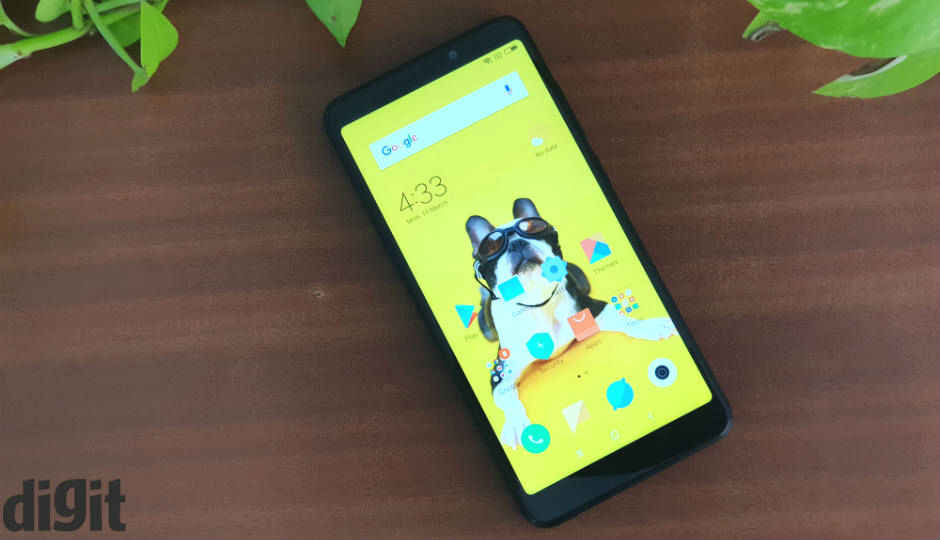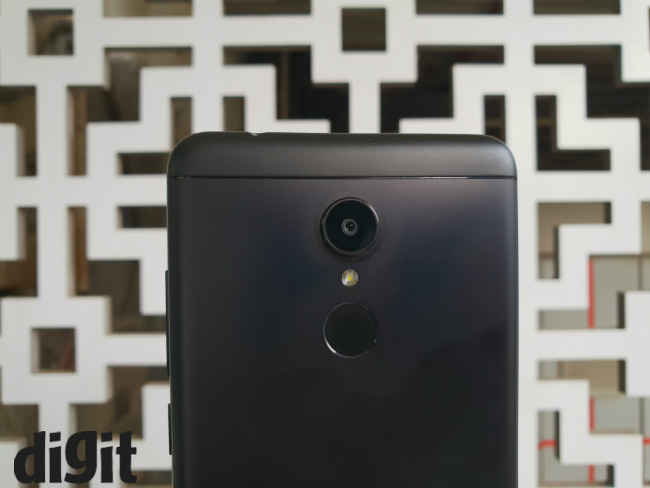

After claiming the numero uno position in terms of market share in India, Xiaomi is on a roll. The company began the year with the launch of the Redmi Note devices along with the Mi TV after which it launched two more TVs and now another phone. With all the new products, it becoming clearer what Xiaomi is trying to do. The Chinese manufacturer is bringing high-end devices (not just phones) minus the high-end price. It changed the TV landscape with the Mi TV while the Redmi Note phones are infamous for undercutting the competition.
More than that, with phones, Xiaomi still seems focused more on the budget segment where the sheer volume of sales are enough to compete with the bigwigs. With the Redmi 5, Xiaomi is simply consolidating its position as the maker of the best budget phones. At Rs 7,999, you cannot ask for a more powerful phone. There are visible compromises, yes, but the overall package justifies the price perfectly.
While it’s not clear as to how well-oiled the Redmi 5 really is, we used the phone for a bit right after its launch and registered our first impressions about it in this article.
Design


The Redmi 5 fits right into the rest of Xiaomi’s lineup of budget phones. In fact, there’s not much separating the Redmi 5 from its elder sibling, the Redmi Note 5, except for a smaller display. From the back, it is nearly indistinguishable from the Redmi Note 5. Both have the camera jutting out of the body, placed centrally right above the fingerprint sensor with distinct diamond-cut lines dividing the top and bottom chins. The phone also feels like it is made out of metal, but placing a magnet on it will tell you its just plastic. Nevertheless, it does feel like it has a metal body which is more than what you can ask for at the price it is being offered at. Having said that, it’s not much different from its predecessor, the Redmi 4, especially the in-hand feel, which is not a bad thing at all.
Turn it to the front and you will find the Redmi 5 is now up to date with the competition in terms of offering a taller 18:9 display. Despite the new taller display, it is not exactly bezel-less. The Redmi 5 has distinct bezels on all sides.
However, at 7.7mm, this is indeed one of the slimmest Redmi phones we have seen. Xiaomi did cut down on the battery capacity on the Redmi 5 and perhaps have gone for a taller and thinner battery thanks to the extra space the taller form factor provides. Quite expectedly, the Redmi 5 comes with an IR blaster.
The Redmi 5 also has the same flaws that the Redmi Note 5 was criticised for. It has the older micro-USB port and a Hybrid SIM slot.
Display
The Redmi 5 may look similar from the back, but the new taller display sets it apart from its predecessors. The phone has a 5.7-inch IPS LCD display of 720p resolution and an 18:9 aspect ratio. The display takes up around 75 percent of the body and has a pixel density of 282 ppi. That’s actually lesser than the Redmi 4, but the panel does look brighter.
The 18:9 display may be more in line with modern specifications, but not all apps will be compatible with the newer display. It is helpful mostly while watching videos on YouTube and while multitasking as the screen is divided into two squares.
Performance
The Redmi 5 is powered by a Qualcomm Snapdragon 450 chipset which is an octa-core chipset manufactured on the 14nm FinFET process and clocked at 1.8GHz. The Snapdragon 450 powered the Vivo V7+ which retailed upwards of Rs 20,000. In that sense, the Redmi 5 is one of the cheapest phones to feature the Snapdragon 450 chipset. The fact that it’s built on the 14nm process makes it as power efficient as the Snapdragon 625. The chipset is coupled with 3GB of RAM and 32GB of storage. On paper, the 3GB of RAM might seem a little less and 32GB of storage is just about adequate. Only a thorough testing will tell us what the performance of the phone is like.
Software
The Redmi 5 runs on MIUI 9.1 which is based on Android 7.1.2 Nougat. All Xiaomi devices now run on the same UI, but the issue remains that it is based on an older version of Android when Android 8.0 is going to be an year old soon. MIUI 9.1, however, is one of the better custom skins seen on an Android device. It may ape iOS a lot, but the tiny features like Mi Drop, an in-built image editor, an improved notification pane and the likes.
It also felt smooth and slick while operating and there are multiple themes and icon packs to choose from.
Camera
If you compare the hardware, the rear camera on the Redmi 5 is the same as the Redmi Note 5. It has a 12-megapixel sensor with 1.25um large pixels and F/2.2 aperture along with phase-detection auto focus. The only visible difference is the LED flash. The Redmi 5 has a single LED flash.
Now, even though the hardware is the same on paper, the results didn’t seem at par with the Redmi Note 5. Nevertheless, it still seemed good enough for a phone at that price. While daylight landscapes have good enough clarity and sharpness, the dynamic contrast isn’t as high. Against harsh sunlight, expect the shot to be overexposed. There is zero shutter lag as long as you are not shooting with HDR turned on. Moreover, macro shots come out quite nice with crisp focus, but the edges do tend to get blurred. The quality degrades progressively with lesser light. At low light, the phone tries to get the details right by cranking up the ISO. This increases the noise in the frame which isn’t desirable. But then again, these are just initial impressions I had when shooting the usual test samples. A more thorough testing is required to give a solid verdict on the camera.
The front camera too isn’t that noteworthy. The 5-megapixel front shooter coupled with an LED flash on the front isn’t sharp. Using the flash won’t really help. It will cast a harsh light on the face while keeping the rest of the frame dark. The beauty mode also isn’t helpful as it tries to smoothen the skin which makes it look artificial.
Battery
The Redmi 5 has a 3,300mAh battery which is lesser than the 4,000mAh battery in its predecessor. Xiaomi expects the power-efficient chipset will make up for the lesser capacity but only in-depth testing will prove that claim. Charging the phone, however, will need some patience. The phone does not support fast charging and even uses the older micro-USB port.
This was our quick first impressions of the Redmi 5. Stay tuned as we will bring you our in-depth review of the phone soon.